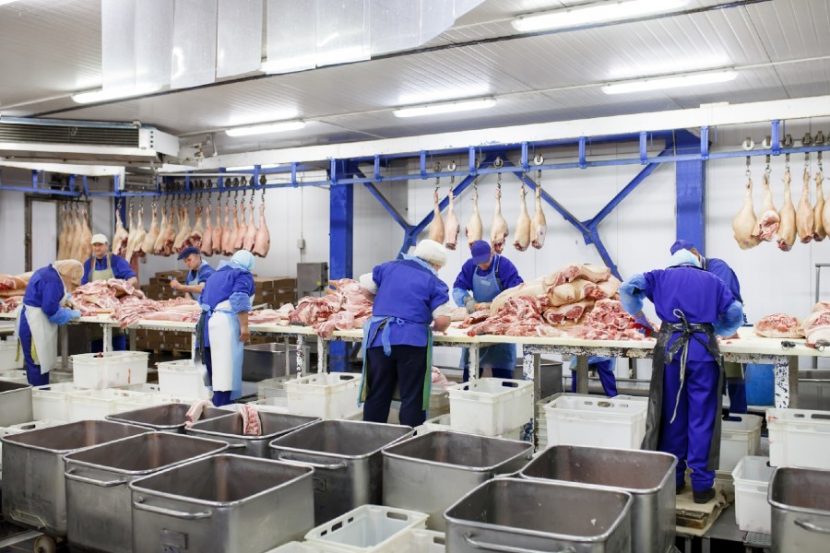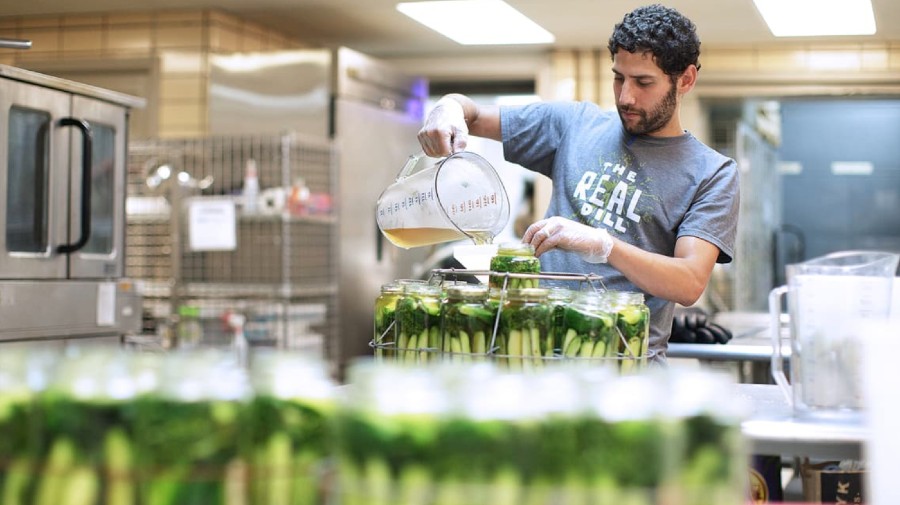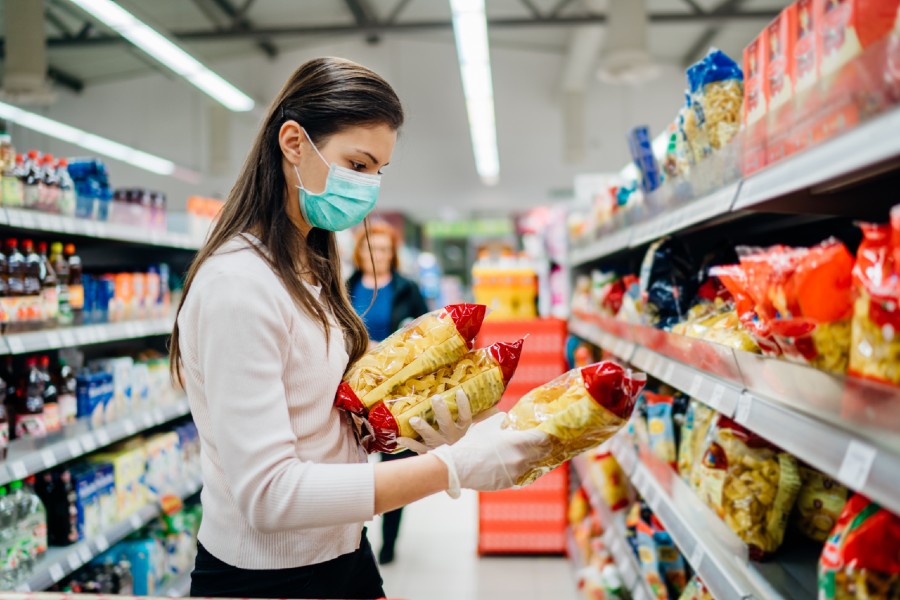Reducing the Threat of SARS-CoV-2: From Farm to Fork
By Keith Warriner
CoVid-19 is the most serious pandemic since the Spanish Flu of 1918. During this time the food industry has been placed under significant stress from panic buying and the collapse of the food-service sector. Moreover, the food industry is labor intensive, meaning that the virus can rapidly spread through workforces and cause the breaking of supply chains that are felt by suppliers and customers alike.
CoVid-19 a foodborne pathogen?
The repetitive line from regulatory bodies is that there is no evidence that CoVid-19 is a foodborne pathogen. Although the virus can survive on other surfaces for extended times, this is a function of temperature and relative humidity. Although the surface of foods would provide an unfavorable environment for CoVid-19, the reality is that it has yet to be studied. Yet, it is worth noting that a virus cluster in Alberta was likely traced to a serving spoon. Therefore, it is possible that contamination recently deposited on a surface could theoretical to be passed via food. If this would result in a gastrointestinal or respiratory illness remains to be elucidated.
contingency plans should be formulated for alternative scenarios; such as production being switched to different facilities
Stay dynamic and build in redundancy
In the uncharted waters of the CoVid-19 pandemic, anything could happen. For example, a staff member testing positive has resulted in the whole workforce going into quarantine and leading to plant shut-down, which has occurred at several processing plants across the United States. Therefore, contingency plans should be formulated for alternative scenarios; such as production being switched to different facilities, having furloughed workers in reserve, and/or alternative suppliers being identified. Maintaining increased inventory and raw materials would also increase the redundancy and the flexibility of the operation. Cooperation with competitors should also be considered, with a willingness to switch production at short notice.
Think outside the box
At the very onset of CoVid-19 a common question asked was: Is there a risk of packages or packaging material carrying the virus? The reality is that the risk is low but the perceived risk is high. Therefore, to give confidence to customers, surface decontamination methods such as those based on UV-C or on Advanced Oxidation Processes can be applied before sending packages out.
Another important step should be the introduction of monitored hand washing through the use of technology that can keep track of the frequency and duration of hand washing. Commercial systems are available but are currently restricted to the health care sector. By using thermal imaging cameras it is possible to identify those workers exhibiting symptoms, which could be another means of tracking and containment, although it should be noted that a high proportion of carriers are asymptomatic.
Don’t slack off with food safety management systems
In the midst of a pandemic it’s easy to forget that we also need to contend with the more common foodborne pathogens. This is especially relevant given that there is evidence that exposure to foodborne pathogens can compromise the immune system in its ability to fight the CoVid-19 infection. Moreover, audits and inspections may not be performed to the same rigor or frequency as pre-pandemic sites.
Therefore, despite the restrictions, distractions, uncertainty and motivation of staff, it is important to reinforce food safety practices. Importantly, although it is tempting to put in place increased measures to prevent the potential transfer of CoVid-19 (as they have done in retail) it is better to keep procedures as normal as possible at the production and processing stage. A lot of the initiatives to contain CoVid-19 don’t necessarily work and are primarily implemented without evidence of benefit. Within the processing plant it is possible the new structures and producers implemented could lead to a greater risk of accidents. This provides staff with a degree of consistency and ensures the key preventative controls are maintained.
The exit strategy
There is only a certain amount of time that stay-at home strategy can be in place. Towards the end of the summer one can envisage that antibody testing will be routinely applied to identify those who have had the infection and developed immunity. Such individuals will be provided a “passport” to return to normal life with those that have avoided infection remaining at home. The time taken to resemble any sort of normality is unknown, but by keeping the farm, processing facility or retail outlet afloat will go a long way in weathering this storm.
About the Author
Dr Keith Warriner is currently a Professor within the Department of Food Science at University of Guelph, Canada. Dr. Warriner received his BSc in Food Science from the University of Nottingham, UK and PhD in Microbial Physiology from the University College of Wales Aberystwyth, UK. He was awarded the Ontario Innovation of the Year award in 2017, OCE Mind to Market award in 2018 and IAFP Food Safety Innovation of 2019 for his work with Clean Works Corp in developing surface decontamination technologies.

-
 FeaturedRisk management
The Cost of a Breach: What a Cyberattack Could Mean for Food Safety Recalls
FeaturedRisk management
The Cost of a Breach: What a Cyberattack Could Mean for Food Safety Recalls
-
 FeaturedRisk management
Securing the Food Chain: How ISO/IEC 27001 Strengthens Cybersecurity
FeaturedRisk management
Securing the Food Chain: How ISO/IEC 27001 Strengthens Cybersecurity
-
 FeaturedRisk management
Revolutionizing Food Safety Training: Breaking Out of the “Check-the-Box” Mentality
FeaturedRisk management
Revolutionizing Food Safety Training: Breaking Out of the “Check-the-Box” Mentality
-
 GFSI Standards
GFSI 2025: Building Trust, Tech-Forward Solutions, and Global Unity in Food Safety
GFSI Standards
GFSI 2025: Building Trust, Tech-Forward Solutions, and Global Unity in Food Safety
-
 FeaturedFood Safety
Integrated Pest Management: Strategies to Protect Your Brand’s Reputation
FeaturedFood Safety
Integrated Pest Management: Strategies to Protect Your Brand’s Reputation
-
 FeaturedFood Safety Culture & Training
No Open Door Policy: Challenges That Impact Pest Control in Food Processing Plants
FeaturedFood Safety Culture & Training
No Open Door Policy: Challenges That Impact Pest Control in Food Processing Plants




